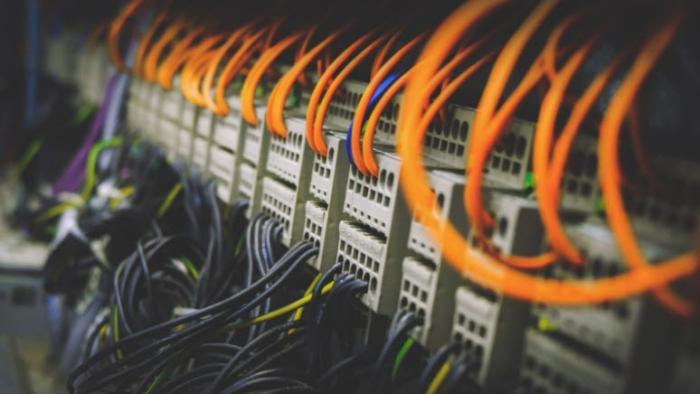The Difference Between PLC and RTU
It’s safe to say that we all benefit from process automation in some shape or form, whether we realize it or not. Many of the products and systems that we rely upon to feed our families, get us to and from work, and allow for a restful Sunday afternoon are made possible by process automation. More often than not, the devices that drive these processes will either be a Programmable Logic Controller (PLC) or a Remote Terminal Unit (RTU). And while each of these devices are used for a very specific function, the qualities that both define and differentiate themselves are no longer as clear as they once were.
In this article, we’ll define both PLCs and RTUs and explore their differences, similarities, and uses.
Getting to Know PLCs and RTUs
Before we get to pitting the benefits of a PLC vs an RTU, let’s take a moment to define what each piece of equipment is. A PLC is a rugged, industrial computer that is used to control automation in industrial processes. PLCs are robust enough to execute automation controls of a single device up to and including an entire production line. PLCs utilize digital or analog I/O (inputs/outputs) to “communicate” the actions to the device in the field (e.g. actuator, robotic arm, conveyor, etc.). A programming language like Ladder Logic, Structured Text, Instruction List, Functional Block Diagram, etc. is used to program the logic within the PLC. It is this logic programmed into the PLC that determines how the autonomous processes are executed. PLCs are often paired with Human Machine Interface (HMI) or Supervisory Control and Data Acquisition (SCADA) systems that allow human operators to view equipment and process statuses, acknowledge and clear alarms and faults, view statistical data collected by the system, or manually override a field device. PLCs seldom transfer data wirelessly and instead rely upon cables to communicate with field devices and gather data.
When defining an RTU, it may seem like both devices are interchangeable. Like a PLC, an RTU is a device that is used for remote monitoring and control of field devices within an automated industrial process. However, what differentiates an RTU from a PLC is that the former is considered a self-contained computer as it possesses all of the components generally associated with a computer, a processor, memory, and storage. RTUs can be used in remote locations or in harsh conditions that pose a danger to human life and can transfer data and communicate wirelessly.

The Benefits of a PLC
All else being equal, why would a PLC be used instead of an RTU to automate an industrial process? There are a number of things that make PLCs the controller of choice, each of which will be explored below.
- Low Cost in a Manufacturing Setting – While a PLC or RTU would work just fine in just about any manufacturing plant, utilizing a PLC would prove more advantageous because the features that set RTUs apart don’t really amount to much. Within a closed space a single network connected PLC will suffice; opting for an RTU in this environment is generally viewed as “overkill”.
- Environmental Controls Within a Manufacturing Plant – Because most manufacturing processes require at least some human presence, environmental controls are generally used throughout the facility to keep temperatures at comfortable levels. As such, PLCs, which are not designed or built to withstand extreme temperatures are a fine choice in this type of environment.
- Manufacturers Already Use PLCs – In a facility that has historically used PLCs to drive their autonomous processes, there is little incentive to switch to an RTU. While there are certainly some benefits to using an RTU controller (as we’ll see below) the cost of updating the infrastructure that is currently on site could be prohibitive. Generally, there needs to be a solid case for switching a PLC environment to a RTU environment.
- Input/Output Control – PLCs are better suited for output control of devices like valves, pumps, motors, etc. because a wired connection to these devices is generally viewed as more reliable. The threat of a poor wireless connection that could impede the execution of output controls is simply not worth it for some applications.
- SCADA Connectivity – RTUs do not include a visual display so an RTU environment requires the integration of SCADA connectivity so a human operator can view a graphical representation of the system. Having said that, PLCs do not necessarily require a SCADA system to work alongside it. Many modern PLCs either have a built-in display or the control provided by the program is so sophisticated that a display may not be necessary.
The Benefits of an RTU
As was alluded to in the previous section, Remote Terminal Units are a more advanced, more ruggedly designed version of the PLC. RTUs are “intelligent” enough that they can control multiple processes simultaneously without needing to be overridden by a human operator, RTUs will interface with a Distributed Control System (DCS) and a SCADA system but also with a more sophisticated control system, like a PC, which makes programming or editing the program, monitoring and controlling the system an easier user experience.
An RTU can also monitor the digital and analog parameters by using sensors and disseminating the data received from the field devices in the system. That data is then sent to a local monitoring hub (as is typically done by utility operations like electricity, oil, and water). RTU software can assist in the troubleshooting process during deployment.
It stands to reason that, like PLCs, RTUs are the controller of choice for specific sectors. For example, while you might see PLCs more widely used in manufacturing environments, RTUs are often favored for use by telecommunication and transportation companies. Additional benefits are included below:
- Durability – Due to their more rugged design, RTUs are resistant to the ill effects of harsh environment conditions. Their design also lends itself to applications where a processes’ inputs and outputs are located far afield from the facility that houses the controller. RTUs have the benefit of being exceptionally reliable; they can be powered for long periods of time by running off of a battery or solar panel (depending on its location).
- Data Transfer – While the speed of communicated data between field devices, systems, and PLC is faster than with an RTU, the data transfer between an RTU and the ancillary devices and systems includes only requested data. This means while data transfers by PLCs occur at intervals, data transfer for RTUs is driven by events.
A Monitoring Device for All Applications
As we can see, both devices excel in certain applications. Picking the monitoring device to use will likely depend on the industry for which it is intended. This of course is just a rule of thumb, but it is one that certainly has some merit as each industry tends to utilize common procedures and standardizations. A great deal of responsibility falls onto the technology responsible for automation processes. PLCs and RTUs, while similar in some respects, perform very specific roles. If you’d like to learn more about PLCs and their many applications, or you’re interested in a career as a PLC Technician, contact George Brown College today.
